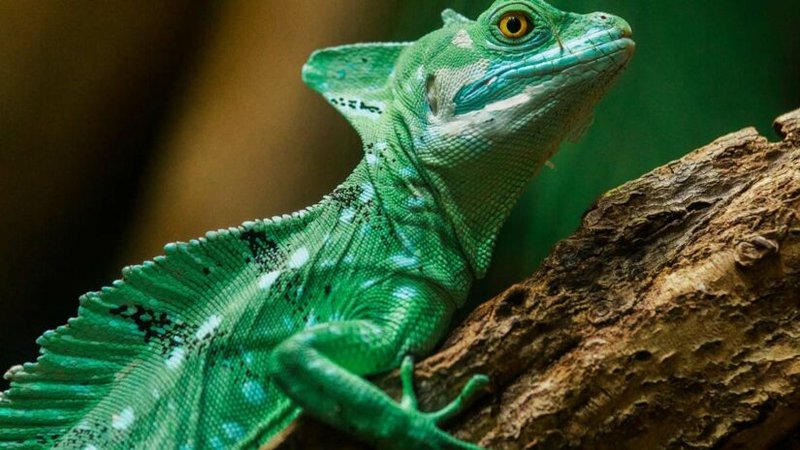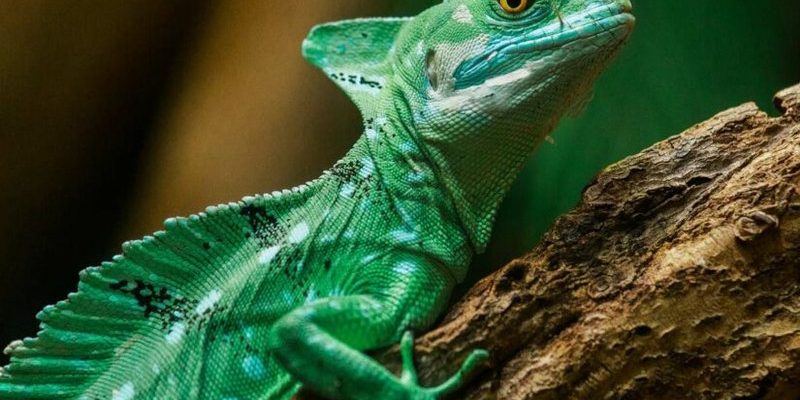
In various cultures, the basilisk lizard represents transformation, resilience, and the intricate relationship between nature and the human experience. Its unique traits have sparked stories and symbolism across the globe. So, let’s dive into the world of the basilisk lizard and explore its significance in culture and folklore, all while uncovering what makes this unexpected star so captivating.
Origins of the Basilisk Legend
The basilisk lizard’s name itself is derived from the ancient Greek word “basiliskos,” meaning “little king.” This term often refers to a mythical creature that was said to have the power to kill with its gaze. While the lizard itself doesn’t carry such a dangerous reputation, it has been steeped in these myths since ancient times. In medieval European lore, the basilisk was depicted as a serpent or dragon, often portrayed as a fearsome creature that could cause death with just a glance.
Here’s the thing: the connection between the real basilisk lizard and these mythical tales might partly stem from its unique abilities. For instance, its ability to sprint across water is nothing short of mesmerizing. This remarkable feature has led to countless stories that blur the lines between reality and myth. The basilisk lizard serves as a symbol of transformation: from an ordinary creature to a mythic icon!
Throughout history, various cultures have adopted and adapted the basilisk legend, intertwining it with their beliefs and practices. In some cultures, it’s seen as a bringer of death and misfortune, while in others, it’s considered a protector against harm. This duality in perception reflects our fascination with the unknown and the stories we create around it.
The Basilisk Lizard in Popular Culture
You might be wondering how this lizard made its way into contemporary pop culture. Look no further than J.K. Rowling’s *Harry Potter* series. The basilisk in *Harry Potter and the Chamber of Secrets* is portrayed as a monstrous serpent that embodies the mythical qualities of the original legend. This portrayal has furthered the mystique surrounding the basilisk, capturing the imagination of fans worldwide.
But the basilisk doesn’t stop there! It’s made appearances in various books, movies, and even video games, often symbolizing strength and danger. Its unique features and connections to mythology make it an alluring creature in tales that span genres and generations. When you see a basilisk in popular media, it often denotes more than just a creature; it represents hidden depths and stories waiting to be uncovered.
The lizard’s appearance has become iconic in fantasy settings. Artists and creators often emphasize its stunning green color and unique running ability, making it a symbol of agility and adaptability. This connection to the mythical basilisk serves as a reminder that our perceptions of creatures can evolve and adapt, much like the stories we share.
Symbolism in Different Cultures
The basilisk lizard’s influence stretches far beyond Europe; it has made its mark in various cultures around the world. In some Native American traditions, for example, the basilisk is seen as a symbol of survival and transformation. Many tribes believe that this lizard can overcome insurmountable challenges, mirroring the journey of life itself. This resonates with people who face obstacles, serving as a reminder that resilience can lead to growth.
In addition to its symbolism of transformation, the basilisk lizard also represents duality. In certain African cultures, it is regarded as a guardian spirit, protecting communities from harm. Conversely, in others, it embodies a more sinister aspect, representing chaos or misfortune. This duality reminds us that every symbol has layers, and understanding these layers can enrich our appreciation of cultural stories.
Moreover, in Eastern cultures, the basilisk can symbolize wisdom and enlightenment. The ability to run on water often serves as a metaphor for overcoming life’s hurdles with grace and agility. It’s a reminder that, even when the tides seem impossible to navigate, it’s possible to rise above challenges if we harness our inner strength.
The Connection Between Nature and Ourselves
The basilisk lizard also serves as a bridge between nature and human experience. Its unique adaptations inspire us to reflect on our relationship with the environment. For instance, the basilisk’s ability to run on water is a perfect metaphor for navigating life’s challenges. Just as it skims the surface of water, we too can learn to glide over obstacles rather than sink beneath them.
In today’s fast-paced world, the lessons we can draw from the basilisk lizard are more relevant than ever. With conservation efforts facing challenges, it’s essential to remember that every creature has a role to play in our ecosystem. Embracing the basilisk lizard as a symbol of resilience encourages us not just to appreciate nature but also to engage in protecting it.
This connection can manifest in various ways—through storytelling, art, and conservation initiatives. By harnessing the power of the basilisk lizard in our narratives, we can inspire future generations to value and protect our natural world. After all, the stories we tell about creatures like the basilisk can shape our understanding of the environment.
Conservation and Future Symbolism
As we look toward the future, the role of the basilisk lizard in culture and symbolism may continue to evolve, especially with rising environmental concerns. The more we learn about these creatures, the more they become powerful symbols of resilience not just in mythology but also in real-life conservation efforts.
Basilisk lizards are mainly found in Central and South America, and their habitats are increasingly threatened by deforestation and climate change. Advocating for their conservation can transform our understanding of them from mere myth to a call to action. By preserving their habitats, we also protect the stories and cultural significance that come with them.
As we advocate for environmental awareness, the basilisk lizard could symbolize hope and action. It reminds us that every small effort counts, and by sharing stories of these unique creatures, we inspire change. This evolution in symbolism reflects our understanding of the interconnectedness of life and our responsibility in preserving it.
In summary, the basilisk lizard is more than just a fascinating creature; it’s a rich tapestry of culture, symbolism, and resilience. From its mythical origins to its modern-day representations, this lizard reminds us of the beauty and complexity of our natural world. Embracing the stories surrounding the basilisk can inspire us to reflect on our own journeys and the challenges we face.
So the next time you hear about the basilisk lizard—whether in a story, film, or a casual conversation—take a moment to appreciate its significance. It’s a symbol of transformation, resilience, and the deep connections we share with the world around us. As we protect these remarkable creatures, we also honor the rich cultural heritage they embody, inspiring future generations to cherish both nature and the stories that come with it.

